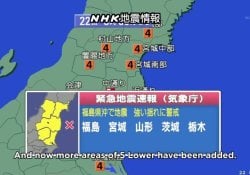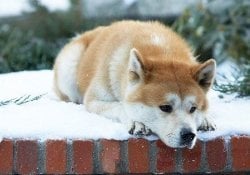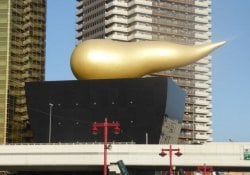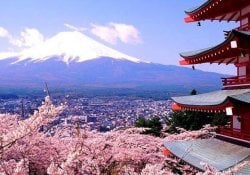Dragons are mythological creatures from different cultures, the most famous are from China, Korea and India, but Japan also has its legends and stories of Dragons. In this article, we will talk about Japanese dragons and some curiosities.
Dragons in Japan are called ryu [竜 or 龍] and most of them are related to water and not to fire as some think. In addition to being aquatic, they often change into humans or other things. Unlike Chinese dragons, they look like snakes and have crocodile-like heads.
Dragons are rarely mentioned in Japanese stories. Some say these dragon stories stem from sightings of huge fish that grew disproportionately. Some are dragons imported from other cultures, some even appear in dragon anime.
Ryujin - Dragon God of the Sea and HIS DAUGHTERS
Ryujin [龍神] is a dragon god also known as watatsumi [海神] who lives in the ocean and appears in several Japanese myths. He transforms into a human and stole priceless jewels from a prince.
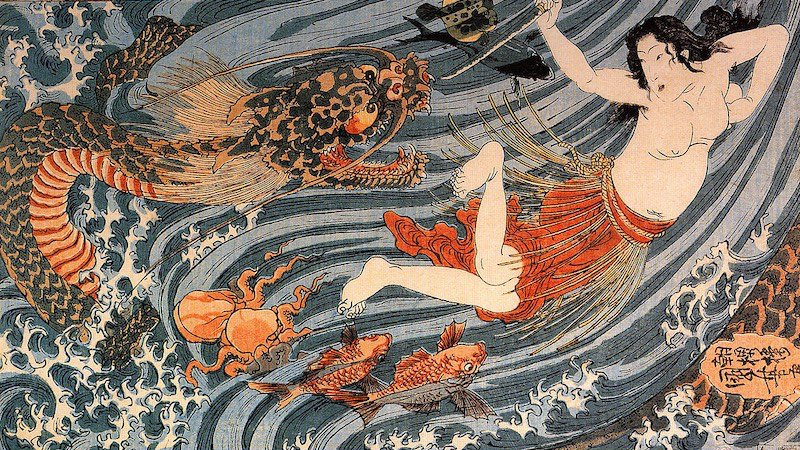
Legend says that this prince falls in love with princess Tamatori, who manages to steal her lover's jewels, but cuts her breasts to keep the jewels from the wrath of the Dragon Ryujin, thus dying from the wound.
The Ryujin is believed to live in an underwater palace called the Ryūgū-jō, where he kept the tidal jewels called the kanju. These magical gems were used by Ryujin to control the tides.
Otohime, Toyotamahime and Kuniyoshi
Toyotama-hime is another daughter of the Dragon God Ryujin. Toyotama marries Prince Hoori, but returns to the sea when he breaks his vow not to spy on her.
Otohime is one of the most beautiful daughters of Dragon God Ryujin. She is also the grandmother of Jimmu, the first Emperor of Japan. She is present in the legend of Urashima Taro, a young fisherman who saved Otohime who was in turtle form.
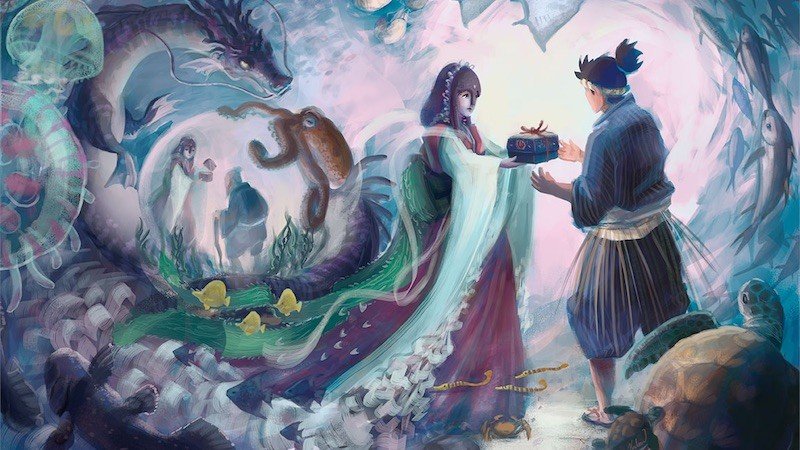
Kuniyoshi – Another daughter of the Dragon God Ryujin, she watches a warrior named Hidesato who was not afraid of his Dragon form and later asks the warrior to kill a giant centipede.
Yamata no Orochi - 8 headed dragon
Yamata no Orochi [八岐の大蛇] is an 8-headed, 8-tailed, red-eyed dragon with moss and trees on its back. It was so big that it occupied 8 valleys and 8 peaks. Also known as the Great Eight-Headed Serpent (Dragon).
Annually the Orochi Dragon required the sacrifice of eight virgins. One day, one of the eight required virgins was Susano's beloved. Considered god of thunder, Susanoo no Mikoto, with his sword, cut off each Orochi's head.
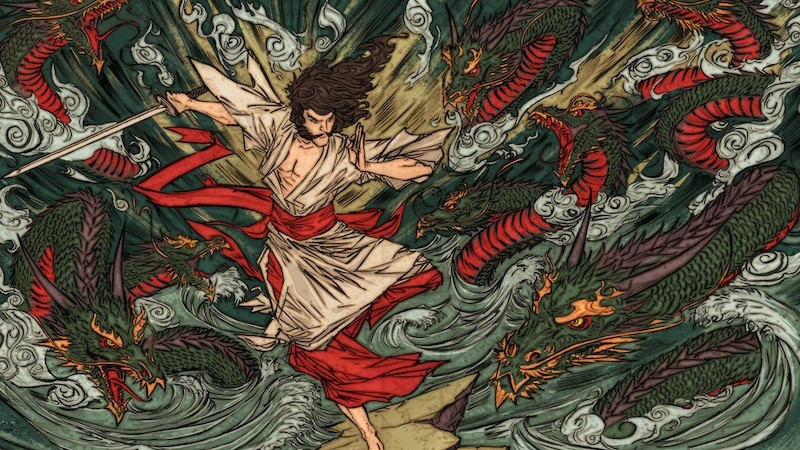
From her womb fell the sacred orb of life, the Magatama, and from the last severed head there rolled a tear that became the mirror. Amaterasu got the Dragon Slayer Sword Kusanagi, Izumo got the Magatama orb and Princess Yata got the mirror.
These three objects are now known as “The Three Sacred Treasures of Japan” and are said to be preserved in the Imperial Palace in Tokyo.
The article is still halfway through, but we recommend also reading:
Kiyohime - Angry Lover
Kiyohime's [清姫] family was wealthy and his father Shoji was the village chief. The family provided accommodation for priests and travelers. One day young Kiyohime fell in love with a traveling healer named Anchin.
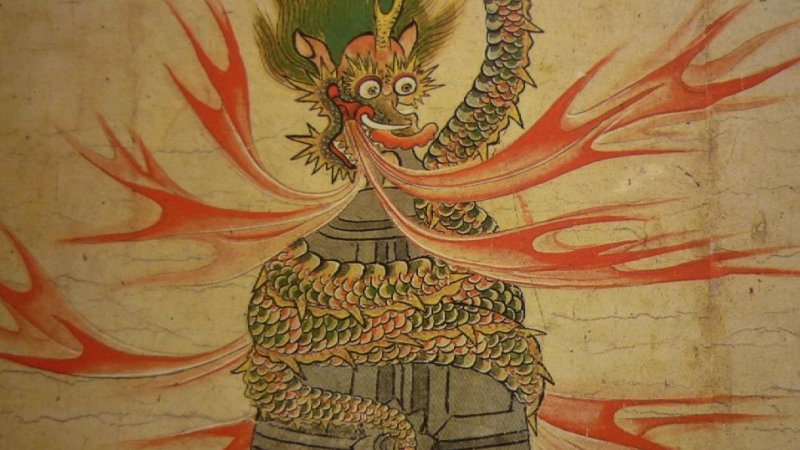
Kiyohime and Anchin had a romance, but one day the healer lost interest in Kiyohime and tried to flee across the Hidaka River. Kiyohime's anger was so great that she turned into a dragon and chased Anchin.
The healer tried to hide from Kiyohime's anger inside an iron bell in a temple, but Kiyohime as a dragon wrapped himself around the bell, hit the bell several times and in the end gave a fiery belch that melted the bell with Anchin inside it.
Seiryu - AZURE DRAGON AND THE 4 DRAGONS
There are two legends involving 4 protective creatures. In one of them the 4 creatures of green, red, black and white protect the Japanese cities, in another there are four dragons that protect the seas.
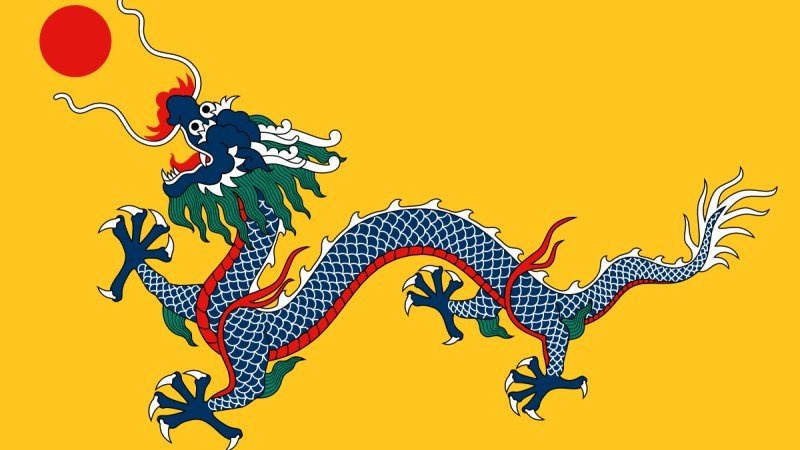
Azure Dragon is present in both. He is a green dragon of Chinese origin called Qing Long. In China he is a symbol of the Chinese constellations, but in Japan he is one of the four spirits that guard Japanese cities.
He is also called Seiryu, the protector of the city of Kyoto or East Japan. The west is protected by a White Tiger, the north by the Black Turtle, and the south by the Red Bird.
Other Japanese Dragons
There are many Japanese dragons that appear in legends and historical, cultural and religious records. Below we will briefly mention some popular Japanese dragons.
Mizuchi - yet another serpent dragon
Mizuchi [蛟] is a Japanese aquatic dragon/serpent and possibly a deity, mentioned in the Nihon Shoki chronicles and Man'yōshū poems. Records mention human sacrifices made in offering to the Mizuchi who inhabited the rivers.
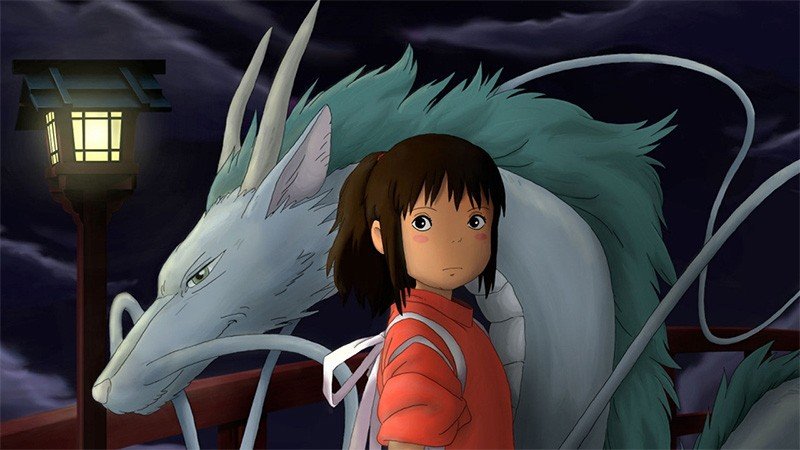
Wani - The Crocodile Dragon
Wani [鰐] is a crocodile dragon or sea monster mentioned twice in Japanese legends. Wani can also simply be a crocodile, but in Japanese mythology it is categorized as a dragon.
Nure-onna - Serpent Yokai
Nure-onna [濡女] is a serpent-like yokai that are the popular dragons of Japanese legends. Its difference is in a woman's head. She is often seen at rivers and beaches washing her hair.
Zennyo Ryuo - Rain Dragon
Zennyo Ryuo It is a rain dragon god mentioned in Buddhist stories and in the Kyoto Imperial Palace. He is a small dragon that usually appears in human form, but with his dragon tail.
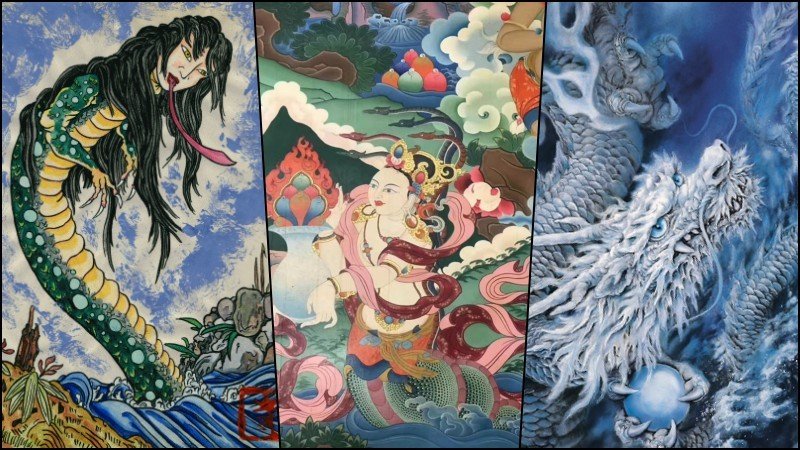
Kuraokami - The Snow Dragon
Kuraokami is referred to as the Dragon of Darkness, but he is also a Shinto deity of rain and snow. He was also born to Izanagi and Izanami as were most Japanese dragons and deities.
Kuzuryu - The exorcised dragon
Kuzuryu is a folklore dragon from Nagano Prefecture in Japan. He is mentioned as a venomous and ferocious dragon that lives in the lake, in which humans had to offer sacrifices. One day he was exorcised and became the local guardian.
Inari Ōkami - Deity of Prosperity
This deity is very popular and has a mountain full of portals in Kyoto dedicated to Inari. She is often represented as a fox. She has also appeared as a serpent or dragon in some accounts.

